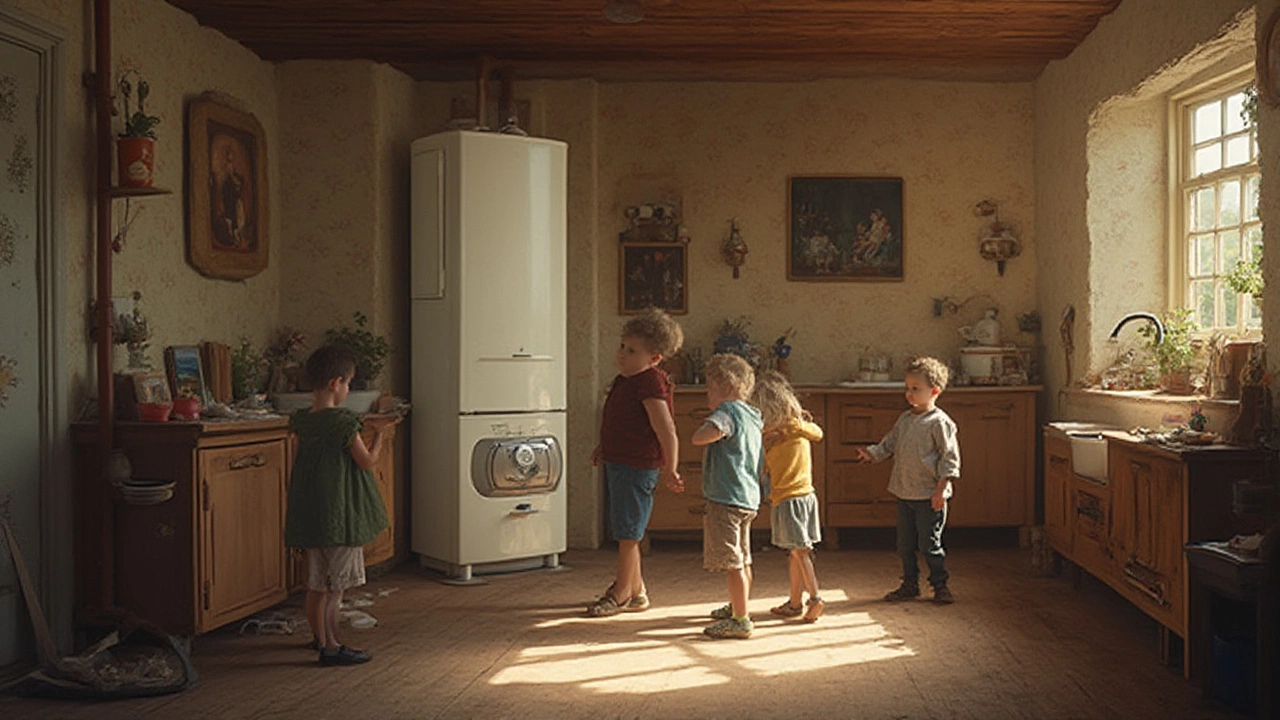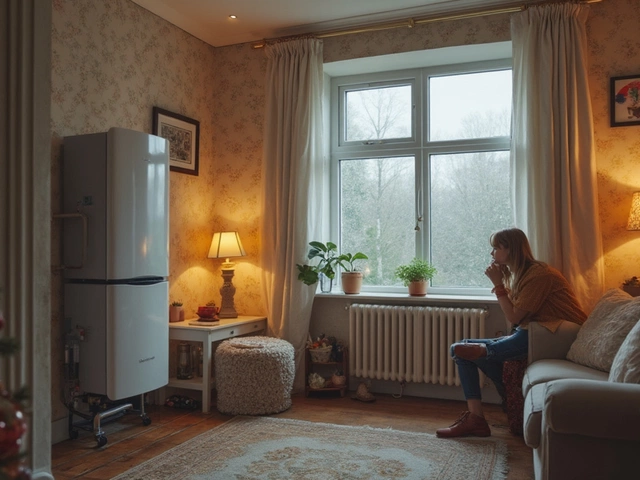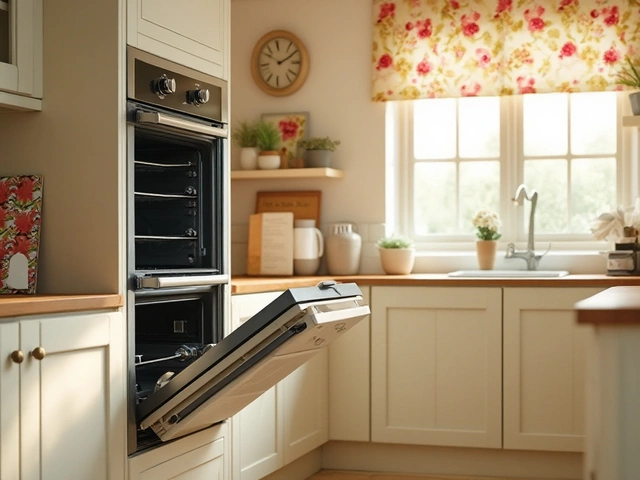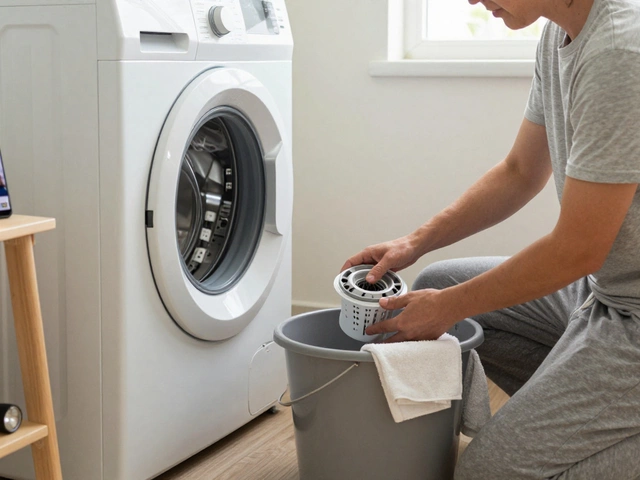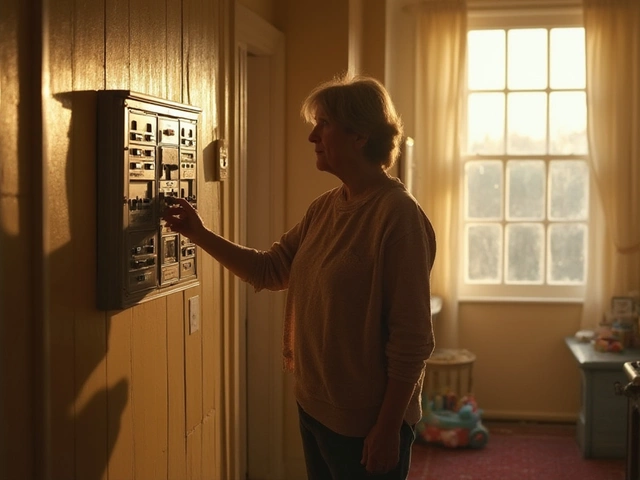The idea of a boiler ticking away dutifully for half a century sounds like wishful thinking—right up there with cars never rusting and cell phones surviving the toilet. Yet, in some homes and historic buildings, there’s a cast iron beast huffing happily since the Beatles were on the radio. Most folks today eye their boilers with suspicion once they reach 15 or 20 years. But is that the real limit? Or can some hardy boilers really last 50 years?
The Boiling Truth: How Long Do Boilers Usually Last?
Let’s not dodge reality: most modern boilers are built for about 10–20 years of reliable service. If you look up most boiler manufacturer warranties, they’ll cover you for up to 15 years, sometimes 20 if you’re lucky and the company’s feeling generous. Yet, you’ll find stories online—especially in older houses and historical records—of boiler lifespan records hitting 40 or even 50 years. Cast iron boilers from the 1960s and earlier were absolute tanks. These aren’t your lightweight, wall-hanging condensing models with plastic trim. We’re talking about multi-hundred-pound hunks of metal, with gravity-fed pipes, ticking thermostats, and service stickers older than your favorite uncle.
The key difference? Build quality and simplicity. Older boilers, especially cast iron ones, were simple, rugged, and forgiving machines, often oversized compared to modern efficient home needs. Modern boilers push efficiency (great for energy bills) but pack in more electronics and thinner metals, which aren’t always as forgiving. A well-maintained cast iron or steel boiler could—and sometimes does—outlive several generations of owners. But modern combis and condensing boilers hit their sweet spot for safety, parts, and energy bills at about 15 to 20 years.
Some boiler pros I’ve interviewed recall seeing American Radiator, Peerless, or even Ideal Standard boilers limping along after 60 years. Not common, but not impossible. The biggest factors are water quality, good installation, regular maintenance, and the sheer luck of good design. But here’s a twist—sometimes the cost of keeping the old champ running outweighs its sentimental value.
The stats are clear. Recent surveys of heating engineers show that less than 10% of working boilers in UK homes are over 30 years old. In the US, the typical replacement window is 15–25 years. Sometimes, those super old boilers are only still running because a sentimental owner loves the clunky look—or hates the mess of replacing radiators and pipes throughout an old house. Efficiency? A different story.
Why Do Some Boilers Last Decades While Others Die Young?
So, what separates a boiler that breaks a sweat for 50 years from one that fizzles after its tenth birthday? Let’s be honest: a lot depends on material, design, and luck. Old cast iron boilers last so long because corrosion takes forever to eat through that much metal. Modern steel and aluminum heat exchangers are thinner, for maximum efficiency, but can’t take the same abuse. Plus, every time a new electronic controller gets added, there’s another thing that can fail. It’s not all doom and gloom, though. Today’s boilers pollute less, cost less to run, and take up less space.
Hard water and neglected pipes are the silent killers of longevity. Lime scale can gum up heat exchangers, sensors get blocked, and pumps wear out faster if sludge starts building in the system. If your boiler gets a proper annual checkup, with water treatment chemicals and magnet filters added, it’ll last way longer—sometimes even outliving your car. But skip that, and loose rust, scale, and general grime will shorten its life quickly.
Location also plays a big part. Boilers tucked away in dry, temperate basements often outlast those installed in damp garages or crawlspaces. Poor installation can doom even the best-made boiler—if pipes aren’t sloped right, or the flue isn’t vented properly, expect moisture damage, corrosion, and early burnout.
Here’s a quirky fact: in some old apartment blocks in New York or London, boilers from the early 20th century are still clanking along. But would you want to own one? They’re nowhere near efficient, take ages to heat up rooms, and make a racket on cold mornings. Sure, the thing might hit 50, but at what cost, comfort, and safety?
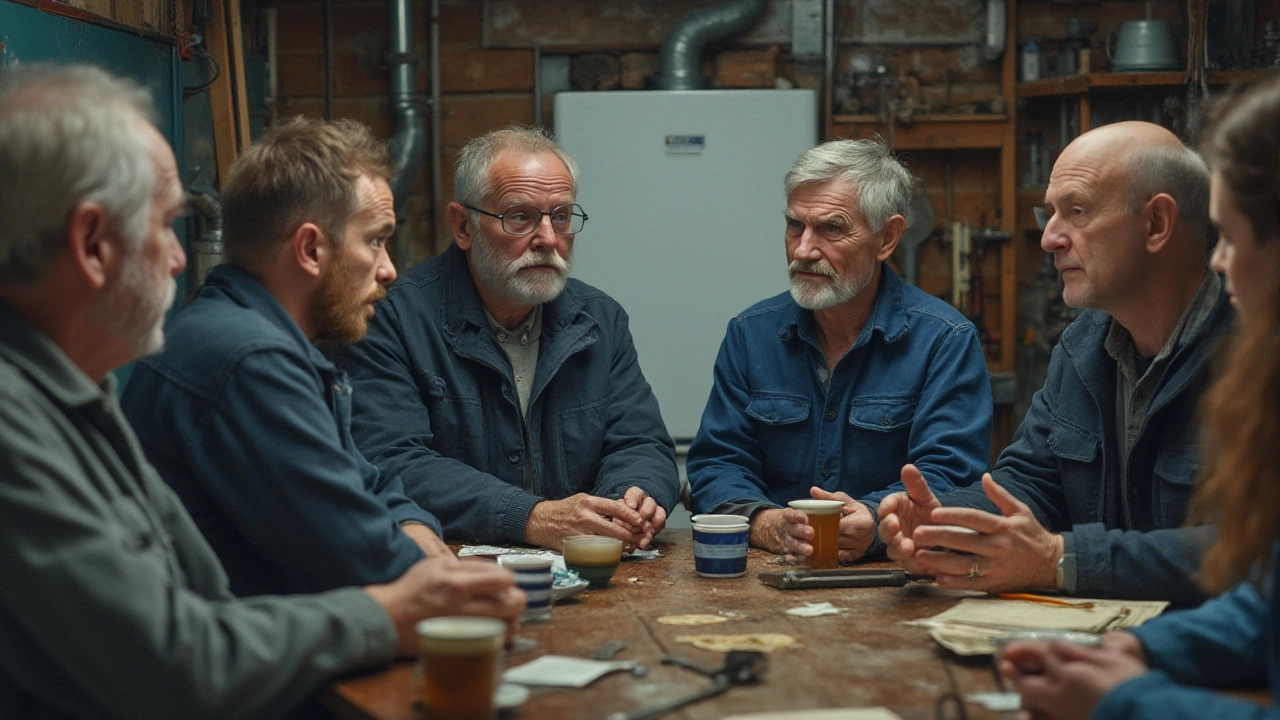
Signs Your Boiler Is a Survivor—And When to Let Go
Spotting a true half-century survivor is easy—check the date code, open the casing (if you know what you’re doing), and see if it’s got more rust than paint. But a boiler that lasts 50 years hasn’t just lingered; it’s been lucky, pampered, or maybe just so overbuilt that time forgot it. If yours is humming safely after several decades, here’s what to check:
- No leaks, drips, or stains on or under the boiler
- Pilot light stays on (older types) or electronic ignition sparks reliably (newer types)
- Water pressure holds steady
- Burner flames are mostly blue (yellow is bad!)
- Boiler cycles properly—no weird hissing or popping
- Radiators heat quickly and evenly
The flip side: when should you say goodbye? The moment you spot recurring breakdowns, rising fuel and repair bills, or nasty noises, start shopping. The absolute no-go: if you smell gas, spot cracking in the heat exchanger, or wake up to a cold house one too many times. Safety isn’t worth nostalgia.
Here’s a quick table of typical boiler lifespans (and what usually knocks them out):
| Boiler Type | Average Lifespan | Common End-of-Life Causes |
|---|---|---|
| Cast Iron (pre-1980s) | 30–50 years | Cracked heat exchanger, systemic leaks, obsolete parts |
| Modern Standard Gas | 15–25 years | Electronic failures, corrosion, heat exchanger fatigue |
| Condensing | 10–20 years | Condensate corrosion, pump failure, flue sensor faults |
| Electric | 15–25 years | Heating element burnout, electronic controller failure |
Insurance companies rarely give discounts for antique boilers—if anything, they’ll up your premium after 20–30 years. Even if the boiler still works, harder-to-find parts and technicians mean every repair takes longer and costs more. And you won’t get modern features like remote control, self-diagnostics, or silent operation without an upgrade.
Secrets to Stretching Boiler Lifespan
If you’re keen to see your own boiler hit a golden anniversary, it’s all about care and smart maintenance. Annual servicing is the one non-negotiable—the earlier you fix problems, the less likely a small leak or faulty sensor will snowball into a total breakdown. Make friends with your plumber, and don’t skip yearly checkups, especially before winter.
Water treatment is huge. Adding inhibitors and using a magnetic filter will keep sludge, rust, and lime scale at bay. Skipping this is one of the fastest ways to kill a modern boiler, as hard water clogs heat exchangers and pumps. If your system gurgles, sludges, or takes forever to heat up, it’s screaming for a flush and chemical treatment.
- Bleed your radiators every autumn to remove air pockets
- Check water pressure monthly; low pressure means your system might have a leak
- Keep the boiler cabinet clear—blockages can overheat sensors or cause poor ventilation
- Replace the thermostat batteries (if wireless) each year
- Listen for knocks and rattles—catching issues early often saves hundreds in repairs
If you’re in a hard water area, install a softener upstream of the boiler. This single tweak is often what lets boilers last far beyond their predicted expiry date. For older boilers with asbestos insulation (yes, that’s still a thing in the oldest homes!), call a licensed professional before even thinking about DIY repairs.
One shiny tip from old-school engineers: run your heating gently throughout the winter, rather than blasting it on and off. Gradual heating puts less stress on pipes, joints, and the boiler heat exchanger.
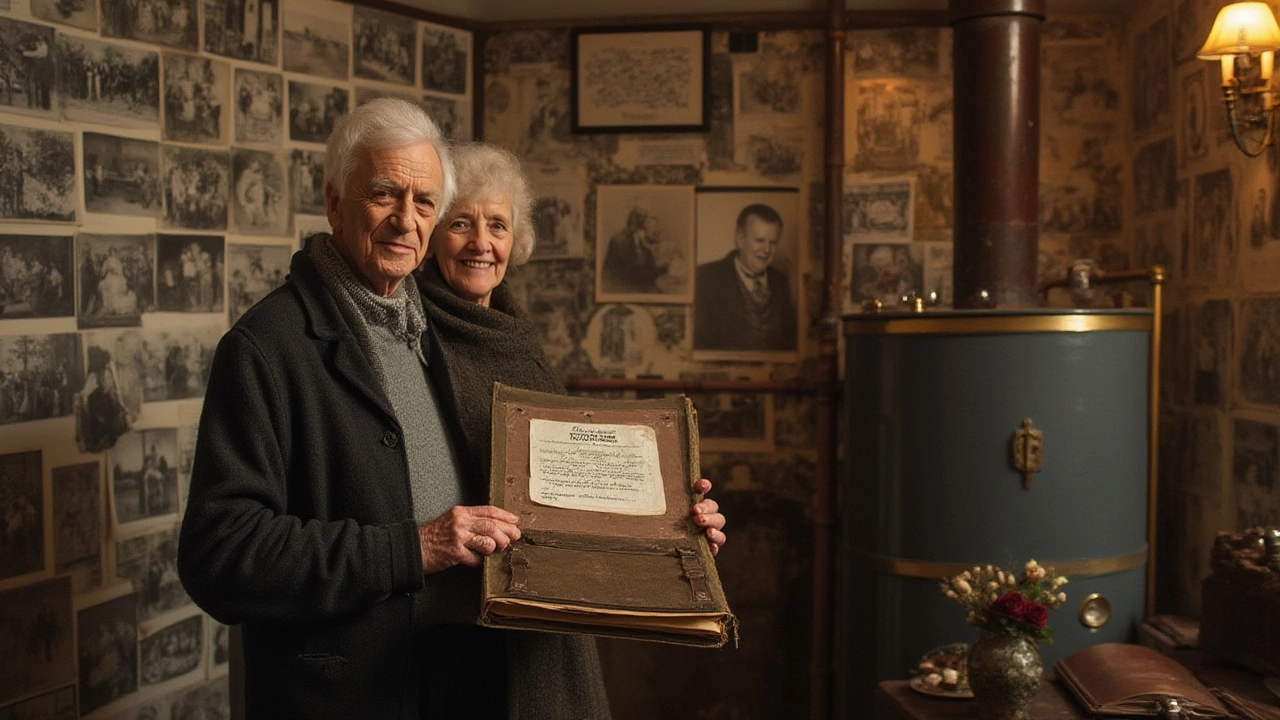
Is Keeping an Old Boiler Worth It? Comparing Old and New
Let’s get practical. Just because a boiler can last 50 years, does that mean it should? Older boilers are miles behind modern ones for efficiency. That 1960s giant in the basement might burn double the gas for the same heat you’d get from a new condensing boiler. Depending on your local energy prices, keeping that old warrior alive might be costing you an extra $400–$600 a year—the price of a luxury coffee habit or a week’s vacation every few years.
Modern boilers have their headaches—more electronics, more sensors, and more things to go wrong if you ignore maintenance. But the upside is undeniable: lower running costs, smaller bills, and more reliable hot water. Plus, they pollute less and heat your home faster. Replacement isn’t cheap, but government rebates and energy company offers can soften the blow.
Older boilers can be grandfathered into insurance policies, and in some situations, a historic building code demands their preservation for aesthetic reasons. But in straightforward family homes, swapping out an aging boiler before it hits its death spiral is usually smarter. Fewer breakdowns, safer homes, and fatter bank accounts by spring.
If you’re sentimental or have a historic property, there are companies who specialize in restoring vintage boilers, sometimes swapping out internals for new parts but preserving the look. It’s a fun niche, but definitely not the budget choice.
Bottom line: with diligent care and a dose of luck, a boiler can surprise everyone by steaming into its fifth decade. But most of us are best off aiming for safe, steady, reliable warmth, and planning for replacement somewhere between years 15 and 25—unless you’ve got the time, budget, and passion to make a 50-year boiler part of your family’s story.
